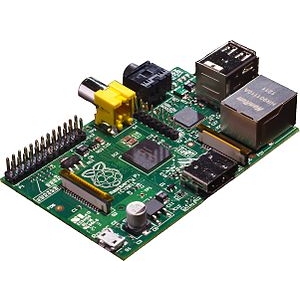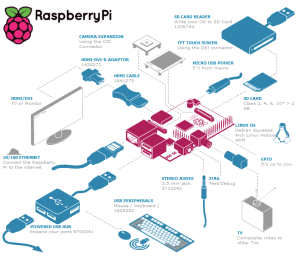I received my second Raspberry Pi in the mail the other day, and have spend some time on exploring the possible uses for the Raspi as a HTPC. The results are very promising, so I thought I might share what I’ve concluded so far.
UPDATE:
The new Raspberry Pi with 512MB RAM is now available!
[sc:adsense468]
At this time there are already SD-card images available running XBMC for Raspberry Pi.
I have tried out the following two:
- RaspBMC (http://www.raspbmc.com/)
- OpenELEC (http://openelec.tv/)
Whereas RaspBMC seems to be a build of XBMC on top of the official Raspberry Pi Debian Squeeze, the OpenELEC distribution is tailored specifically for XBMC and set up to run on the Raspi.
I can definitely recommend running especially OpenELEC on a Raspberry Pi, as explained Here.
RaspBMC
Downloading and installing RaspBMC was extremely an extremely user friendly and straightforward process.
Following one of the guides from the links in the top of the RaspBMC Download page led to a completed SD-Card ready for the Raspi in only ~15 minutes total.
I choose the Linux guide, as I tend to distrust Windows when it comes to allowing home cooked software complete formatting rights of entire drives. I did check out the custom RaspBMC windows formatting software, which seemed very user friendly and straightforward as well.
The distribution you download for the SD-Card creation is only ~50MB large, since the full distribution is downloaded and installed directly from the Raspi when you fire it up for the first time. Thus, it is important to have internet access on the Raspberry Pi for this to be possible. The download and install took about 10 minutes on a high speed broadband connection.
Impressions
I must admit that I did not expect miracles from the small Raspberry Pi for putting out 1080p quality smoothly, but was kinda satisfied with the quality.
Image was crystal clear and menu animations were almost decent but with some notable minor lag spikes.
I had a windows MCE remote and keyboard lying around, and was thrilled to find both to be working just by plug-n-play. Unfortunately, both had major problems with detecting the duration of key presses, making it very hard to navigate the menus or type anything. This might have been fixable somehow, but I did not bother looking into it.
Every video below 1080p was played perfectly, but with some loading time. For some reason I could not get 1080p running without a small lag in sound and video every 5 seconds or so.
Conclusion
All in all I liked the very easy installation process, and the fact that an automatic update feature is also activated by default.
When it comes to smoothness of the menus and video playback there are still some improvements to be made.
BUT keep in mind that the build I have tried here is still just an unfinished RC of what can become a very nice XBMC distribution for the Raspberry Pi.
(I believe that it was the RC3 of RaspBMC I used for this test)
If you don´t own a Raspberry Pi already, grab one here via Amazon.
To read about my better experience with OpenELEC, go to This post.


No Comments Yet